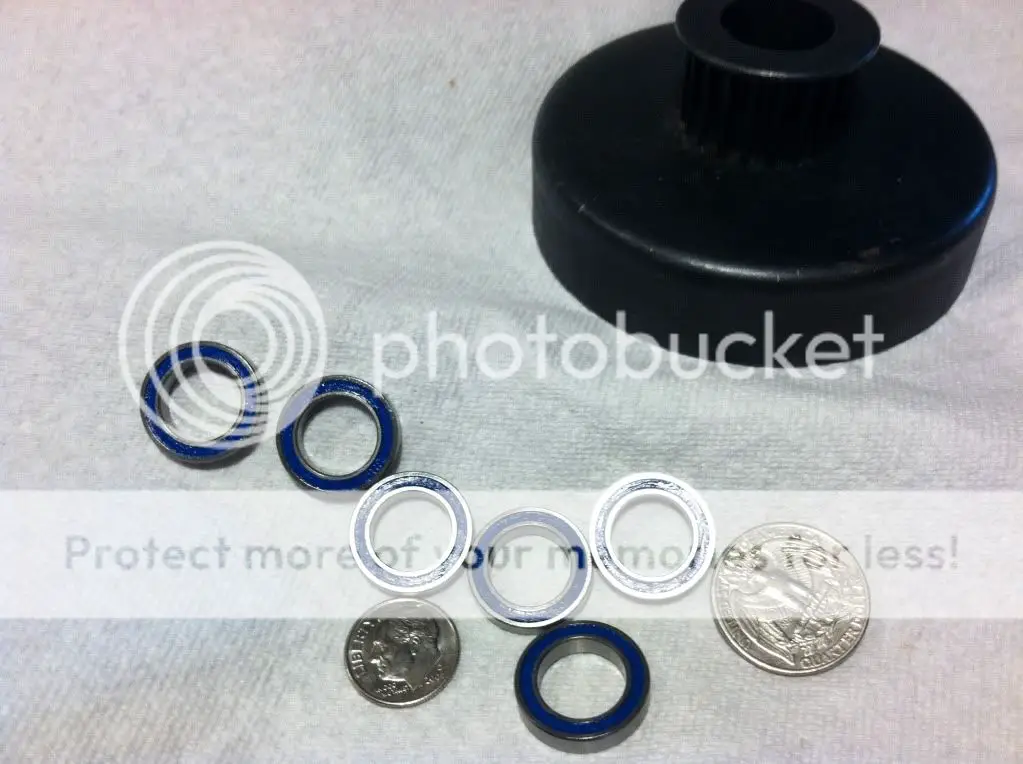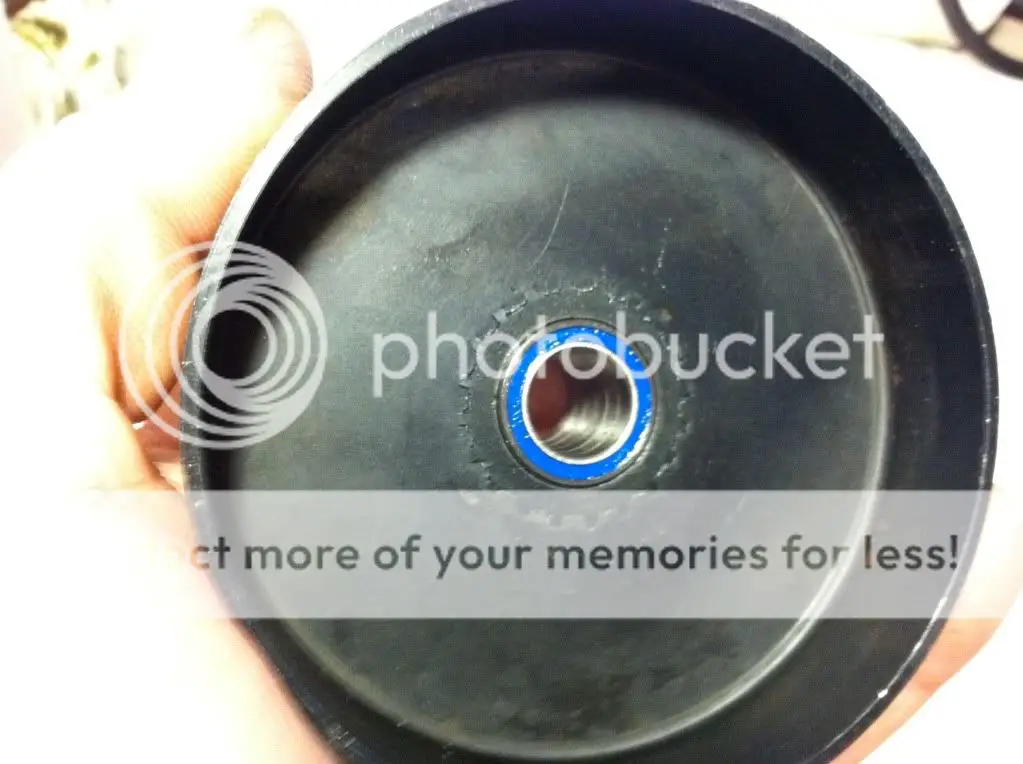cobrafreak
New Member
I've done some playing around with my 4G T drive transmission. The biggest problem that I had was the blasted brass bushing in the clutch. Bad technology all around. I did a lot of research and did a sealed cartridge bearing conversion to the stock 4G T belt transmission. It is a great mod. Quiet, and smooth. It lowers the maintenance significantly. The conversion uses 6 13x20x4mm bearings. The stock engine output shaft is 15mm and requires the removal of 1mm of steel which is really 2mm or steel radially for the fitment of the 13mm bearings. Bushings suck big time. No more oiling, no more wear. It was night and day from the bushing to the bearings. So much nicer. The bearings only cost 99 cents each.






